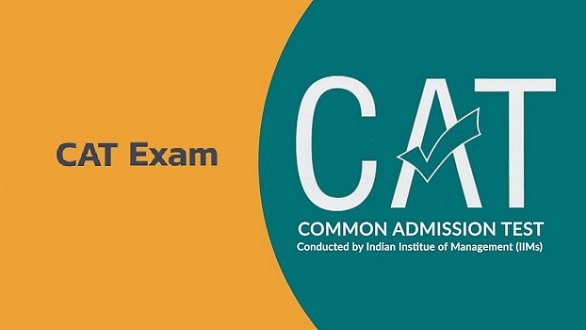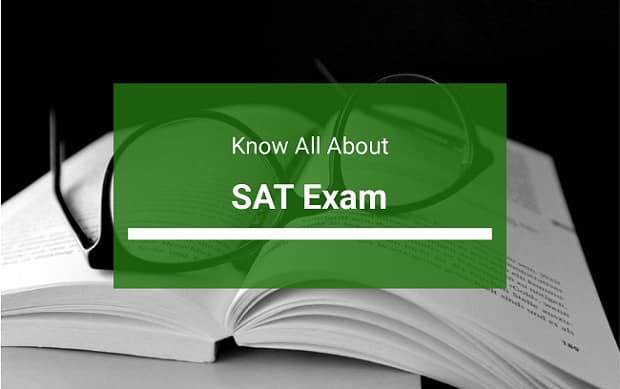Whether you want to work on a start-up or whether you want to work in a top-tier company, having a degree in Master of Business Administration improves the chances of your placement. In recent years, more and more students are focusing on pursuing MBA after completing their bachelor’s degree in engineering and other fields. An MBA course helps in enhancing your resume as a management course focus on willing skills to run a business flawlessly. Most companies are emphasizing hiring candidates with multitasking skills. MBA after bachelor’s degree is not a cakewalk but it will be a cherry on top.
There are several entrance exams available for MBA courses in India. The two national level entrance exams namely MAT and CAT is one of them. Institute like IIMs are majorly focused on the scores of CAT while MAT is accepted by more than 600 management institutes. Admission to Indian B-schools is accepted through entrance exams like CAT and MAT. While certain universities and institutes conduct own entrance exam. But in this article, we are discussing the differences between CAT and MAT examinations. Both entrance exams are quite similar in the term of the syllabus, but a little bit different in some aspects. Hope this guide will help to choose which exam to opt for.
Difference between CAT and MAT

CAT v/s MAT – Conducting Body
Regulating Body of CAT exam:
Admission to MBA courses or PGDM courses is based on the scores of the CAT exam. Thus, the exam is overlooked by the IIM (Indian Institute of Management). Every year top-notch IIMs institutes are offering admission through the CAT exam. Among the top IIMs, higher IIMs institutes have responsible to conduct the exam.
Mode of Exam:
It is a high-level entrance exam among the MBA entrance exam. Although, it is considered the toughest of all entrance exams. It is a Computer-based test (CBT) which means, candidates will be prepared for the online (MCQs) test.
Regulating Body of MAT exam:
Every year, more than 600 Business schools offered admission to MBA/PGDM through entrance exams like MAT. It is conducted four 4 times ( February, May, September, and December) by the All India Management Association (AIIMA) every year across the country.
Mode of Exam:
The exam is organized in three different modes: PBT (Paper Based Test), CBT (Computer Based Test), and IBT (Internet Based Test).
CAT v/s MAT – Eligibility Criteria
Eligibility Criteria of CAT exam:
To appear in the CAT exam, candidates must obtain a Bachelor’s degree from any authorized university that is recognized by the Government of India. Along with this, he or she must have scored 50 % of marks in the qualifying exam. An aspirant who belongs to Schedule Category, Schedule Tribe, and PWS, or DA categories must have scored at least 45% of marks in the qualifying exam. Candidates who are waiting for final results are also considered eligible for the CAT exam. Apart from this, students must possess a professional degree like CS/CA/ICWA with a minimum of 50% of aggregate. These all aspects are also applied to the SC/ST and PwD candidates.
Age Limit: There is no age limit to apply for the CAT exam.
Eligibility Criteria of MAT exam:
The eligibility of the MAT exam is quite similar to the CAT exam. This exam is a golden chance for a student who doesn’t score good marks in graduation. In simple words, there is no aggregate required to apply for the MAT exam. Having a bachelor’s degree in any stream is just enough to apply for this entrance exam. Those who belong to categories like SC, ST, PwD, need have to qualify bachelor’s degree with a minimum aggregate of 45%.
Age Limit: The minimum age limit for the MAT exam is 20 years, and there is no maximum age limit for the MAT exam.
CAT v/s MAT – Frequency Level
Frequency of CAT exam: CAT exam is organized once a year in November. The exam is divided into two sessions- forenoon & afternoon. Presently due to pandemics, the exam is conducted into three sessions.
Frequency of MAT exam: Every year, MAT is conducted 4 times a year in different months namely February, May, September, and December. As we mentioned above, the exam consists of three different modes. The dates of these mode tests are different and students can pick one or more modes for the MAT exam.
CAT v/s MAT – Exam Pattern
Exam Pattern of CAT
To crack the CAT exam, candidates need to qualify for all three sections. The three sections are mentioned below-
- VARC – Verbal Ability and Reading Comprehension
- DILR – Data Interpretation and Logical Reasoning
- QA – Quantitative Aptitude
Regularly, the CAT exam has 100 questions, and students have a total of 180 minutes to solve the paper. Due to the pandemic, the exam pattern will be changed. There are only 76 questions and candidates have 120 minutes to solve the paper (40 minutes for each section). These questions are in both MCQs and Non-MCQs format. The mode of this exam is online, and remembers in the 2021 exam pattern will be reverted and back to 180 minutes format.
Exam Pattern of MAT
The pattern of the MAT exam is divided into five sections. The five sections are mentioned below-
- Indian and Global Environment
- Language Comprehension
- Data Analysis and Sufficiency
- Mathematical Skills
- Intelligence and Critical Reasoning
The MAT exam is conducted in CBT (Computer Based Mode) and PBT (Paper Based Mode).
- Indian and Global Environment – This section of the MAT exam involves questions of General Knowledge and Current Affairs. Additionally, it holds 40 marks and not be counted in the overall results of MAT.
- Language Comprehension – This section has sub-sections namely Verbal Ability and Reading Comprehension. The major topics of this section involve Pronoun, Noun, Verb, Adverb, Adjective, Synonyms, Antonyms, Idioms, Phrases, One-word substitution, Fill in the Blanks, Reading Paragraphs, Para Jumble words and sentence corrections, and many others.
- Data Analysis and Sufficiency – This section is divided into sub-sections namely Data Sufficiency and Data Analysis. The major topics of both include Bar graphs, Pie charts, Data Comparison, Line graphs, Data Sufficiency and Quantitative Comparison, etc.
- Intelligence and Critical Reasoning – This section covers topics of Logical reasoning and Analytical like Pie charts, Arrangement, Course of Action, Family tree, Puzzles, Series, Coding and decoding, Syllogisms and Graphs, Blood Relations, Statement Conclusions, Calendars, Visual Reasoning, etc.
- Mathematical Skills – Mathematical skills are also known as Quantitative Aptitude. Certain MBA exams include quantitative aptitude test which is mostly similar to mathematical skills. The major topics related to mathematical skills include Trigonometry, Modern Mathematics Questions, Algebra, Geometry, Trigonometry and Algebra.
CAT v/s MAT – Duration of Exam
CAT Exam Duration:
The duration of the CAT Exam is 180 minutes spread over 3 hours. Along with this, there is also a time limit for each section that is 60 minutes. Before disappearing from the first section, candidates have to solve all questions as per the limit per section. In 2020, the exam consists of a total of 120 minutes. The following details are mention below-
- Number of Questions – Verbal Ability and Comprehension Reasoning ( 26 Questions)
- Number of Questions – Data Interpretation and Logical Reasoning ( 24 Questions)
- Number of Questions – Quantitative Aptitude ( 26 Questions)
- Total Time Duration – 120 Minutes
- Sectional Time Limit – 40 Minutes
- Marking – +3 for every right response, -1 for every wrong response and there is no negative marking for Non-MCQs.
MAT Exam Duration:
The candidates who have to sit in the MAT entrance exam must solve the whole paper in 150 minutes, there is no sectional limit. The following format will help to understand the exam pattern of MAT
- Number of Questions – 200 Questions
- Total Time Duration – 150 Minutes
- Types of Questions – MCQs
- Sectional Time Limit – No time limit
- Marking – reward given to each question, and .25 marks is deducted for each wrong attempt.
- Non-MCQs – There have no Non-MCQS questions in the MAT exam format.
CAT v/s MAT – The difficulty level
CAT Entrance Exam:
CAT is a national-level entrance exam and considered one of the difficult management entrance exams. Over the past few years, the demand for IIM institutions is getting high. Candidates need to score 99+ percentile in the CAT exam. The exam consist number of stages like group discussion round and personal interview.
MAT Entrance Exam:
As compared to CAT, the level of MAT exam is not hard. In this exam, candidates can easily score 80% of their marks. To get a position in top second-tier AICTE approved management institutions, candidates need to score more than 95% of marks.
CAT v/s MAT – Registration Fees
Registration fees of CAT:
For the General category and NC-OBC category, the fee of the CAT exam is Rs 1900. The fee for Schedule Tribe, Schedule Category, and PWD or DA category is Rs 950.
Registration fees for MAT:
For one paper, the registration fee for the MAT exam is 1650 whether it is IBT, PBT, or CBT. If you want to appear for both PBT and CBT, you need to pay Rs. 2750.
Bottom Line:
These two national-level entrance exams are accepted in Indian Management institutions. Candidates are advised to go through with previous papers to under the weighted and difficulty level of the exam.

Rahul Kumar is a passionate educator, writer, and subject matter expert in the field of education and professional development. As an author on CoursesXpert, Rahul Kumar’s articles cover a wide range of topics, from various courses, educational and career guidance.



